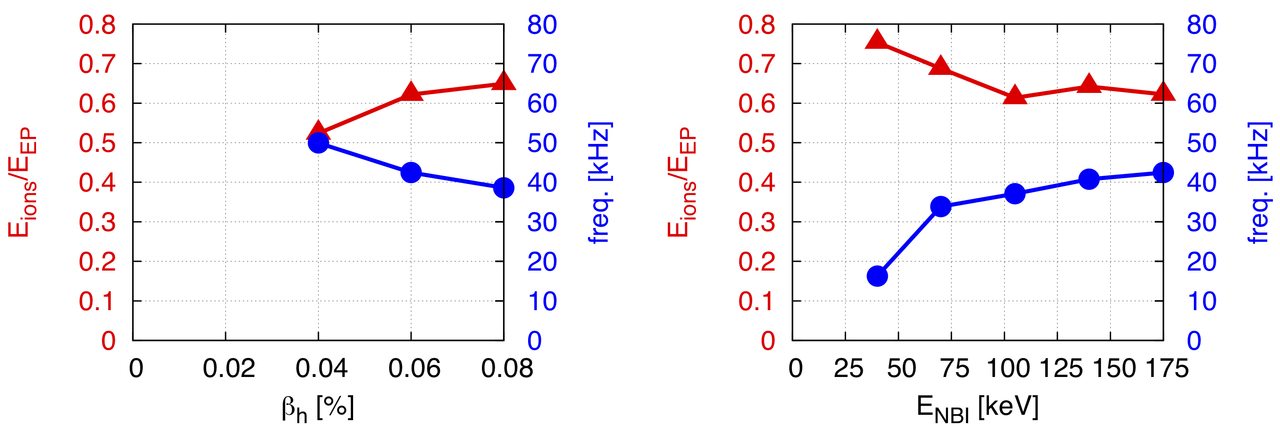Speaker
Description
The energy channels established during the energetic particle driven geodesic acoustic modes (EGAMs) in the Large Helical Device (LHD) plasmas are investigated using MEGA code. MEGA is a hybrid simulation code for energetic particles interacting with a magnetohydrodynamic (MHD) fluid. In the present work, both the energetic particles and bulk ions are described by the kinetic equations. A realistic 3-dimensional equilibrium generated by HINT code is used for the simulation.
The properties of EGAM channeling are systematically investigated for the first time. Five conclusions are found as follows. First, during the non-chirping EGAM activities, EGAM channeling occurs in the linear growth stage but terminates in the nonlinear saturated stage; while during the chirping EGAM activities, EGAM channeling occurs continuously in both linear growth stage and nonlinear saturated stage. Second, the bulk ion heating power increases with the EGAM amplitude, because stronger mode activity transfers more energy to the bulk ions. But the energy transfer efficiency ($E_{ion}/E_{EP}$) is not sensitive to the EGAM amplitude, because both the energy absorption of bulk ions and the energy loss of energetic particles changes together. Third, lower frequency EGAMs make higher energy transfer efficiency as shown in Fig. 1, because the interactions between lower frequency mode and bulk ions are stronger. The EGAM mode frequency decreases with the increase of energetic particle pressure, while the EGAM energy transfer efficiency increases with energetic particle pressure. Also, the EGAM mode frequency increases with neutral beam injection velocity, while the EGAM energy transfer efficiency decreases with the increase of neutral beam injection velocity. Fourth, in the case of deuterium plasma and deuterium beam, the energy transfer efficiency is lower than that of the hydrogen plasma and hydrogen beam. Last, the energy transfer efficiency increases with the decrease of dissipation coefficients. Less energy dissipates by decreasing the dissipation coefficients, and thus, more energy can be transferred to the bulk ions. After the resistivity decreases by 78% from $8.16 \times 10^{-5} \Omega \cdot m$ to $1.81 \times 10^{-5} \Omega \cdot m$, the energy transfer efficiency increases from 40% to 55%.

| Country or International Organization | Japan |
|---|
